Whether you want to contribute a secret recipe or an article to our blog section - we'd love to hear from you! Please feel free to reach out at [email protected] so that we can spread the yummy goodness of saffron recipes together. Join us in our mission to promote sustainable eating habits and share the joy of cooking with everyone!
For now, love yourself and enjoy this one ...
Now love yourself and enjoy this one ...
This quick and easy recipe lets you enjoy a fancy meal in less than 30 minutes!
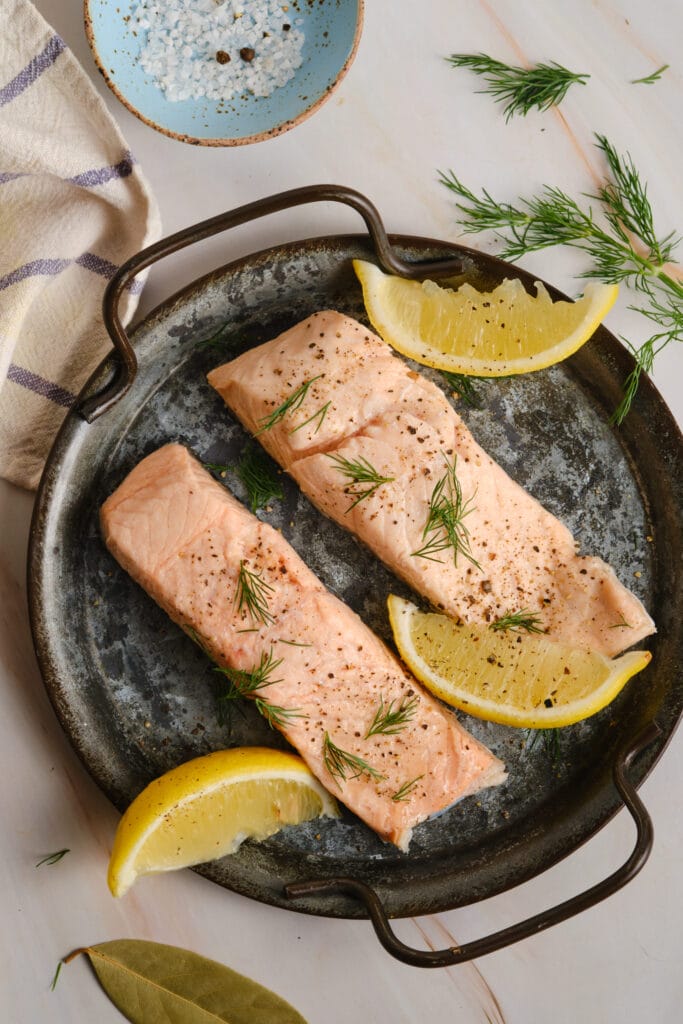
Table of Contents
I first tried and liked salmon when I visited Ireland a few years back. We were staying at an inn on the Dingle Peninsula. Our host would make the most delicious salmon and serve it with our breakfast. Some days, it was smoked, while other days, it was poached. I wasn’t much of a cook then, but I knew one thing—salmon tastes delicious. I like to poach salmon when I have a hankering for salmon during the week. Why? Because it’s quick, easy, and always tasty.
Infused with vinegar, honey, and salt, this poached salmon becomes a sponge for the herbs of your choice. If you follow the recipe, I opt for a simple seasoning of dill peppercorns and bay leaf. Feel free to add your own flavor to this dish. However, if you’d like your salmon to be more sweet and savory, try my baked honey cajun salmon.
Is Poached Salmon Healthy?
Salmon is probably one of the best seafood proteins you can eat. I’m not an expert or anything, but from what I’ve read, salmon is a nutritional powerhouse. For starters, salmon is loaded with omega-3 fatty acids, which help reduce heart disease, keep your brain healthy, and naturally lower blood pressure. There’s also a decent amount of vitamins, including vitamins A, E, and C, not to mention minerals like calcium and magnesium.
Infusing Flavor: More than just water
You could just throw some salt in your water, and your salmon will turn out just fine. But I prefer my salmon to be more than just fine. Infusing the water with a little flavor goes a long way toward making your salmon taste like an entree you’d get at a fancy restaurant. The combo of vinegar, honey, salt, dill, peppercorns, and bay leaf turns the water into an aromatic bath, allowing all those flavors to soak into the salmon. If done right, you’ll taste a harmonious blend of tang, herbs, and a subtle sweetness. While I love to marinate my salmon, poaching has a way of infusing flavors like no other cooking method can. In short, it’s an art form. So, if you want to add shallots, lemon, or whatever else you like, go for it!
INGREDIENTS
- 2 tablespoons white vinegar
- 1 tablespoon honey
- 2 teaspoons kosher salt
- 4 6-ounce center cut salmon fillets, skin on
- Water as needed to cover the salmon
- 12 sprigs fresh dill plus additional chopped dill for serving
- 6 whole peppercorns
- 1 bay leaf
- Cracked black pepper for serving
- Lemon wedges for serving
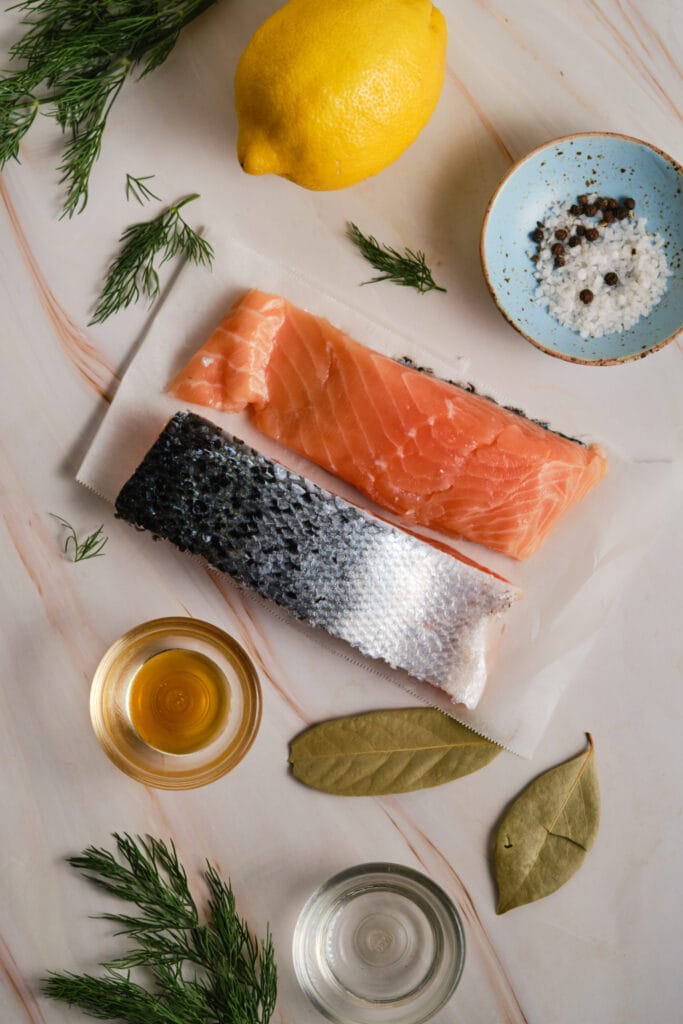
INSTRUCTIONS
Prep
Fill the pan with water, add vinegar, honey, and salt, and whisk to combine.
Submerge
Place salmon fillets in the pan and ensure they are just covered with water.
Flavor
Scatter dill, peppercorns, and bay leaf over the salmon.
Simmer
Bring to a gentle boil and simmer for 2 minutes, adjusting heat to maintain a simmer.
Check
Use a thermometer to check for doneness, aiming for 135 to 140 degrees F.
Rest
Remove salmon, let it rest, then serve with dill, pepper, and lemon.
Devour!
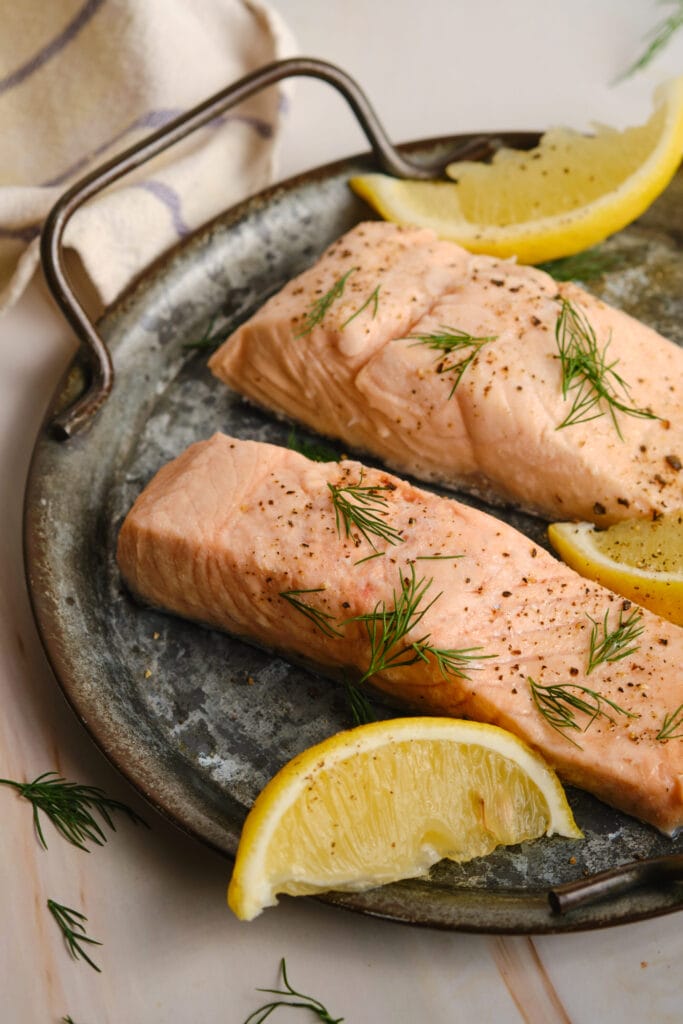
FAQs & Tips
If there ever was a dish that should be eaten right away, it’s this one. I don’t recommend freezing this dish, but you can store it in the fridge for 2 or 3 days. Wrap it in plastic wrap or place it in a sealed container.
The skin supports the salmon’s flesh so it doesn’t fall apart during the poaching process. However, you can use skinless salmon if you prefer. You’ll just need to take care when you transfer the salmon to your plate.
Yes, but I would thaw the salmon overnight in the fridge to ensure it cooks evenly.
Fair enough. A simple 30-minute marinade using lemon juice, olive oil, and your favorite herbs prior to poaching should do the trick.
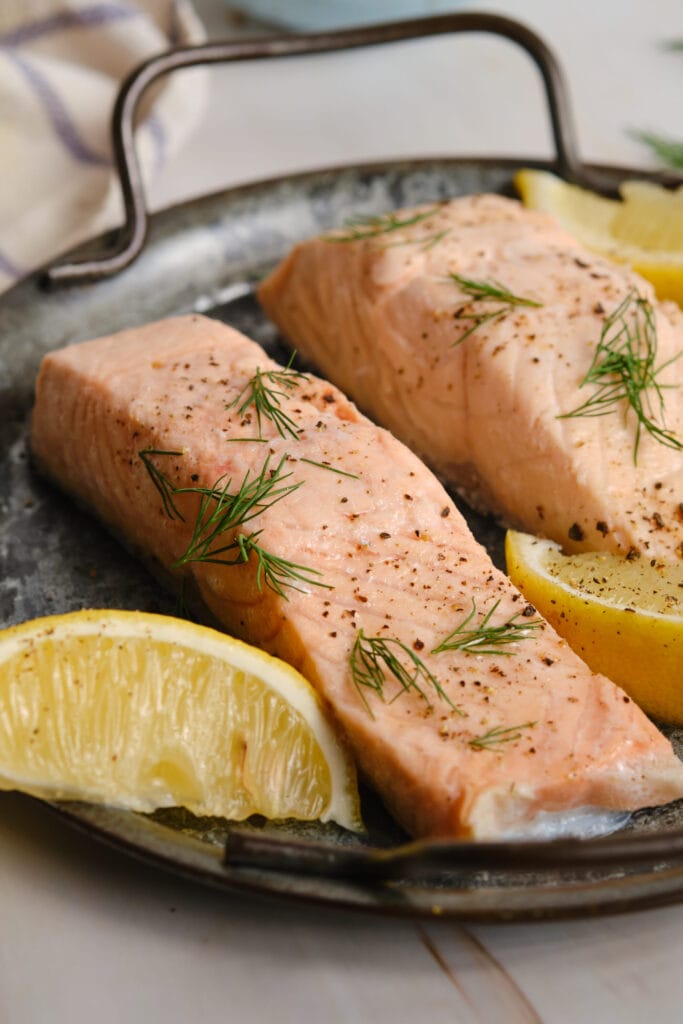
Serving Suggestions
I don’t know about you, but whenever I eat salmon, I need some greens to go with it. During the summer months, I usually go for salads. My poached salmon is pretty simple, so I like to amplify my meal with greens like my Mediterranean broccoli salad or grilled romaine wedges with bacon bits. I also love roasted carrots and potatoes along some corn on the cob.
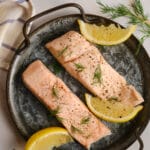
Poached Salmon
Ingredients
- 2 tablespoons white vinegar
- 1 tablespoon honey
- 2 teaspoons kosher salt
- 4 6-ounce center cut salmon fillets, skin on
- Water as needed to cover the salmon
- 12 sprigs fresh dill plus additional chopped dill for serving
- 6 whole peppercorns
- 1 bay leaf
- Cracked black pepper for serving
- Lemon wedges for serving
Instructions
- Prepare a saute pan by filling it with enough water to cover the salmon fillets when added. Stir in the white vinegar, honey, and kosher salt.
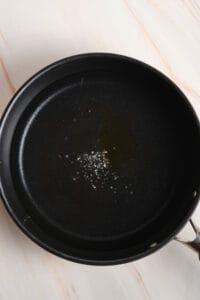
- Place the salmon fillets into the pan, ensuring they are submerged by adding more water if necessary.
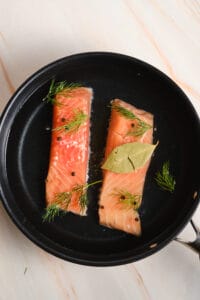
- Add the fresh dill sprigs, whole peppercorns, and bay leaf to the pan.
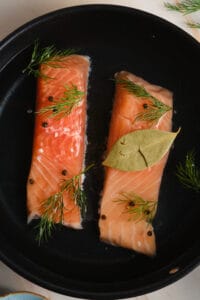
- Heat the pan over medium-high and bring the water to a gentle boil. Simmer the salmon for 2 minutes, keeping the water at a steady simmer.
- Check the salmon’s internal temperature with an instant-read thermometer. Aim for 135 to 140 degrees F, then remove from heat.
- Carefully remove the salmon from the water with a spatula, place on a plate, cover, and let rest for 4 minutes. Serve with additional dill, cracked black pepper, and lemon wedges. DEVOUR!
Nutrition
The post Poached Salmon appeared first on Food Faith Fitness.
References:
By: FoodfaithfitnessTitle: Poached Salmon
Sourced From: www.foodfaithfitness.com/poached-salmon/
Published Date: Fri, 15 Mar 2024 16:16:52 +0000
Frequently Asked Questions
What is inorganic?
Organic food is grown without pesticides and artificial fertilizers. These chemicals can be harmful for your health.
Organic food is grown naturally without harmful substances such as chemical fertilizers, pesticides, herbicides, or fungicides. These chemicals can be dangerous for both humans and animals.
Inorganic foods are meats, fishes, eggs, buttermilk, cheese, yogurt and honey as well as vegetables, fruits and spices.
Organic refers to how an agricultural product was grown. Organic farming uses natural methods to grow crops. Conventional farming uses pesticides and synthetic fertilizers.
The U.S. Department of Agriculture (USDA) must set strict guidelines for organic foods. The National Organic Program Standards require that all organic foods are free of prohibited substances such as antibiotics and growth hormones, genetically modified organisms or industrial solvents. Additionally, organic food must be raised without toxic chemicals, petroleum-based fertilizers, sewage sludges, or ionizing radiation.
What are organic beauty products?
Organic Beauty Products don't contain synthetic chemicals such as parabens. These ingredients are commonly found in conventional beauty products like cosmetics, shampoos, and perfumes.
Organic beauty products are also free from animal testing and do not contain any genetically modified organisms (GMO).
The USDA defines organic as "a system that fosters the cycling of resources." It has been used for many decades to describe food products grown without pesticides.
Because of the damaging effects of chemical substances on our health, there has been an increase in demand for eco friendly beauty products.
These include skin irritation, hormone imbalance, premature ageing, and cancer.
Organic beauty products are created by companies that care about the environment and create safe, healthy products for customers.
What is organic meat exactly?
Organic meat refers to real food grown without the use artificial fertilizers, pesticides, or hormones. Organic meat is also a guarantee that the animals weren’t fed any genetically altered feed. This makes it safe for human consumption because there aren't any harmful chemicals in the meat.
Organic meats are healthier for our environment. When we eat organic foods, we reduce the pollution in landfills, rivers, lakes, etc. Organic farmers generally don't use toxic chemicals that kill birds and insects. We help to protect wildlife.
You can eat organic meats and produce whenever you can. Local buying helps to keep money in the community, rather than moving out of state. Local businesses often pass down savings to customers when they shop locally. In addition, buying local keeps jobs right here in America instead of sending them overseas.
Why should I buy organic?
Conventional agriculture has been linked with many health problems including asthma, allergies. Healthy choices must be made when purchasing food.
Here are some tips from the Environmental Working Group (EWG).
Always purchase organic fruits, vegetables and other products whenever possible.
USDA organic labels for meat, poultry eggs, milk and cheese as well butter and honey are recommended.
Avoid processed foods that are labeled "natural" or "no added ingredients."
Check ingredient lists carefully. If an ingredient is not listed, it can be added during processing.
Fresh meats are better than canned or frozen. Many frozen and canned foods contain less nutrients, like high fructose Corn Syrup.
Do organic foods offer health benefits?
Some organic foods may not prove to be good for you. However, regular consumption of organic foods can have health benefits.
Organic food is free from artificial fertilizers, pesticides and herbicides as well as hormones, antibiotics and genetic engineering. Organic produce is not grown with harmful chemicals that could pose a risk to human health.
The use of additives in the processing process is also less common. So when you buy an organic product, you're likely eating healthier than non-organic products.
Studies show that organic foods contain more nutrients and antioxidants than conventionally grown fruits and vegetables.
Even though organic farming methods can be more costly than conventional farming methods they are often more productive. Organic farming encourages soil fertility and biodiversity.
This helps conserve water resources and protects against erosion. Organic farms also require less energy and fuel, as they aren't treated using toxic chemicals.
People worry that organic foods will be more expensive than those made from conventional food. However, prices will vary depending on where one lives. For example, organic apples tend to be more expensive than traditional apples.
If you take a look at the cost of a basket containing both types of fruits, you will see that organic is less expensive.
Do you really need to buy organic?
It depends on what kind of person you are. If organic food doesn't appeal to you, you shouldn't bother.
You can purchase organic food if it is delicious. And since most commercial growers use chemical fertilizers, pesticides, and genetically modified organisms (GMOs), organic foods are safer for consumers.
Organic agriculture is a way to preserve the environment, conserve natural resources, and encourage biodiversity.
What are the best organic vegetables for you?
Organic vegetables are the best and most nutritious food source. They are the best food on earth.
Organic produce can be grown without the use of pesticides herbicides fungicides and chemical fertilizers. These chemicals can pose serious risks to our environment and health.
Organic produce also has more nutrients, vitamins minerals, antioxidants and phytonutrients. They also contain more fibre, essential fatty acids, enzymes, fiber, and enzymes. They are healthier as we absorb nutrients more easily when we eat organics.
Not only do organic vegetables taste delicious, but they are also safe to eat. Consuming organic produce has no known side effects.
Organic fruits and vegetables can be found at all grocery stores. You can find organic fruits and vegetables at all grocery stores as long as they conform to USDA guidelines.
Statistics
- Nutrients like omega-3 fatty acids were up to 50 percent higher in organic meats and milk than in conventionally raised products.[3] (en.wikipedia.org)
- As for organic meat, regulations require that animals be raised in living conditions that accommodate their natural behaviours (like the ability to graze on pasture), fed 100% organic feed and forage, and not administered antibiotics or hormones. (usda.gov)
- Once certified by the USDA, it can fall into one of four categories: "100 percent organic", "organic," "made with organic ingredients," or "made with less than 70 percent organic ingredients. (en.wikipedia.org)
- Popular clothing brands, like Patagonia, are labelled as organic by using 100 percent organic cotton for many of their styles. (en.wikipedia.org)
External Links
[TAG35]
[TAG37]
[TAG40]
[TAG43]
How To
Are there any downsides to organic products?
Organic food offers many benefits. There are, however, some drawbacks. There are also higher consumer prices and lower quality standards.
It's okay to want more variety in grocery shopping. But we've been programmed to expect cheap food that tastes terrible. It's because most grocery stores carry identical prepackaged food.
Organic food is becoming more popular today because it provides better nutrition and great tasting food. How do you convince people that it is worth the extra effort?
It's possible to tell them that organic food is more expensive. But that doesn't explain why organic food tastes better. It might even make them suspicious of your motives.
Instead, you should highlight its many benefits. Organic food is more nutritious, has fewer pesticides, and uses fewer antibiotics. It's also grown without synthetic fertilizers, herbicides, so it's better for the environment and us.
Organic food is often avoided because it's too costly. However, if they look at the health benefits, organic food may be worth the cost.
Organic food tastes great because it is made according to strict guidelines. It tends also to retain more vitamins and minerals.
Organic food tastes better because it is picked later in the season. This makes it fresher and easier to digest.
Organic food is often cheaper as it's grown organically which requires less labor and fertilizer.
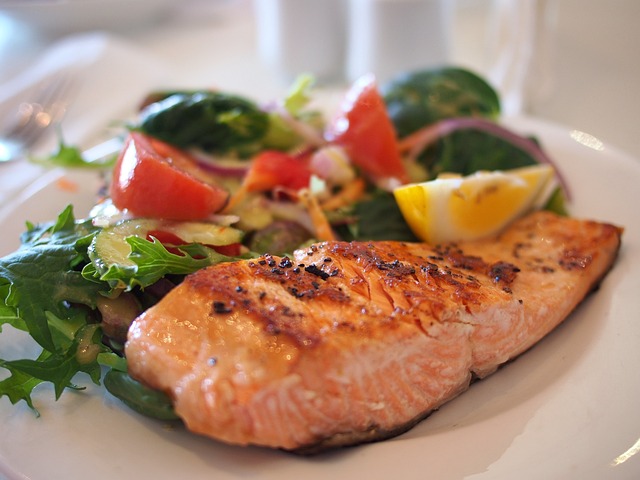 |
[TAG45]This Irish-inspired colcannon soup is easy to make with creamy potatoes, kale and cheddar cheese. The last time I made colcannon (traditional Irish mashed |
 |
[TAG46]This Irish kale colcannon recipe is perfectly buttery and fluffy and easy to make with a handful of basic ingredients. St. Patrick’s Day is just around the |
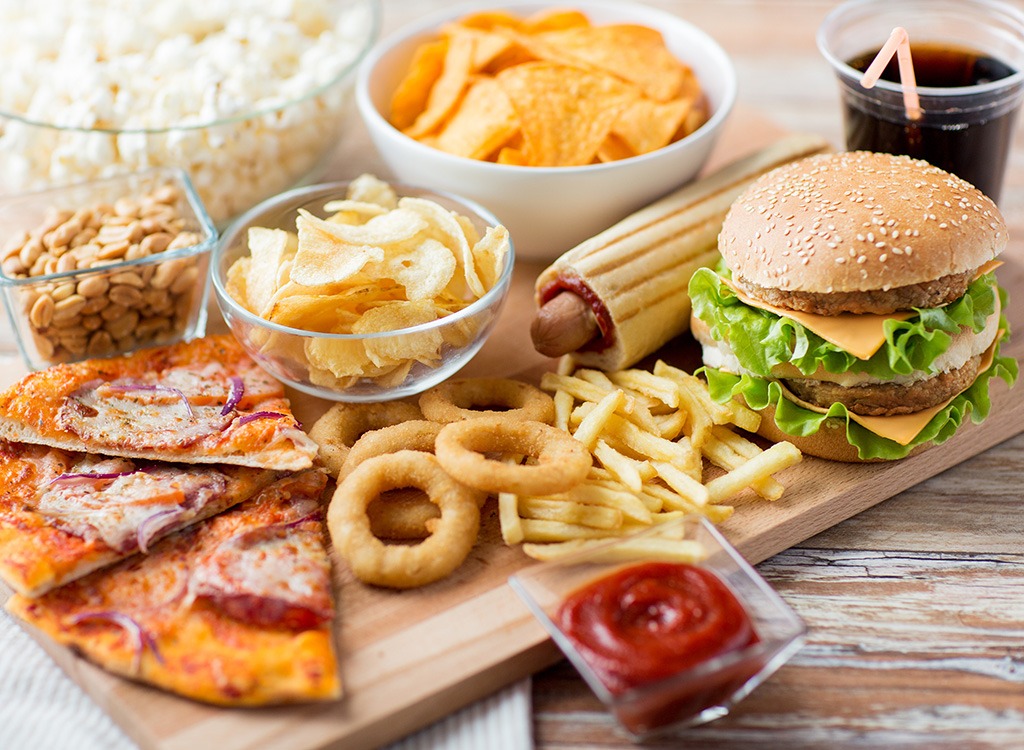 |
[TAG47]Easy to make full flavoured recipes. Life is too short for boring food! |
 |
[TAG48]Hello hello! Just wanted to pop in with a cute little life update. ♡ I’m delighted to share that our sweet son, Milo Alexander Martin, came to join our family |
 |
[TAG49]This vibrant lemony broccoli pesto pasta is quick and easy to make and full of fresh flavors. Your veggies, greens, and pasta…all in one gorgeous dish! ♡ We’re |
 |
[TAG50]HEALTHY & KID-FRIENDLY MEALS easy dinner recipes made in minutes. The Latest Recipes st. Patrick's Day Recipes Hello! I'm Sara! Welcome to Dinner at the Zoo! |
 |
[TAG51]This simple roasted carrot soup recipe is made with creamy tahini and topped with crispy za’atar chickpeas. Naturally gluten-free, vegetarian and vegan. If you |
 |
[TAG52]My longtime favorite flourless cake recipe is decadently rich and delicious, naturally gluten-free, and easy to make in under 1 hour! Trust me, this flourless |
 |
[TAG53]From comfort foods to indulgent dishes browse hundreds of recipes that your family will love and make over and over again. Cooking Classy has never been easier, |
 |
[TAG54]This vegetarian cabbage roll soup is filled with protein-rich lentils and all of the delicious flavors you love from traditional cabbage rolls. Naturally |
 |
[TAG55]These zesty roasted sweet potato and chickpea bowls are layered with sautéed spinach and brown rice and tossed with my favorite 4-ingredient chipotle tahini |
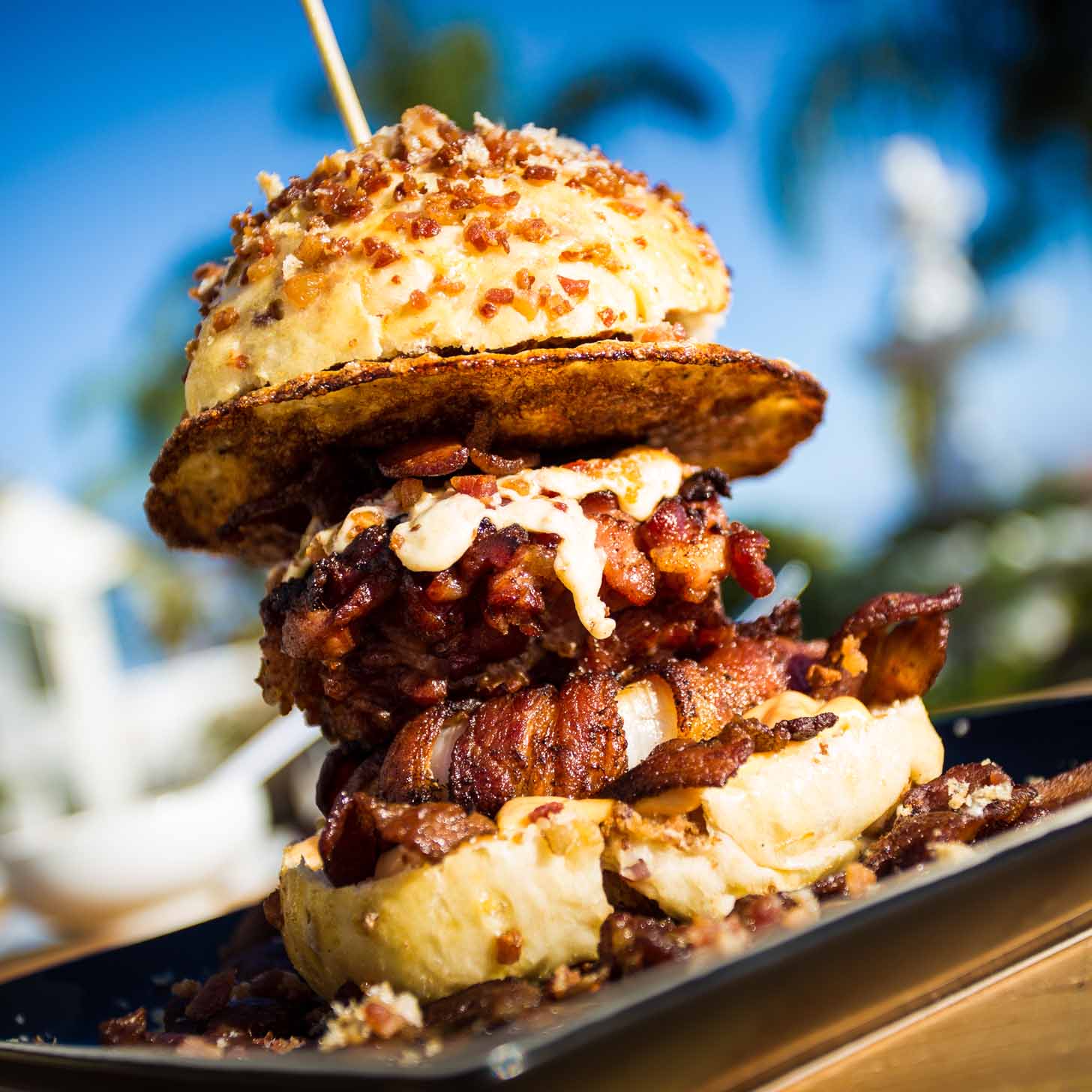 |
[TAG56]A family food blog with hundreds of simple, tested and approved recipes. Find easy step-by-step photo cooking instructions and video recipes. |
 |
[TAG57]This classic matcha latte recipe is easy to make and customize to your liking and always so delicious. The older I get, the more I’m convinced that one of |
 |
[TAG58]This veggie-loaded broccoli cheese soup recipe is perfectly velvety and creamy without using heavy cream. Instant Pot, Crock-Pot and stovetop options all |
 |
[TAG59]find out hundres of delicous food recipes |
 |
[TAG60]This winter farro salad recipe is made with the most delicious blend of seasonal fruit, greens, nuts, crumbled cheese and tossed with a vibrant orange ginger |
 |
[TAG61]This lovely white wine sautéed mushrooms recipe is quick and easy to make, full of rich savory flavors, and can pair well as a side dish with many different |
 |
[TAG62]The food blog with mostly healthy recipes made with real, whole foods inspiring more people to get into the kitchen and cook something good. |
 |
[TAG63]This traditional Swedish meatballs recipe is bursting with rich, savory flavors and topped with a creamy gravy. Always so comforting served over mashed |
 |
[TAG64]This classic Irish coffee recipe is easy to make with 4 ingredients in just a few minutes. Always so warm and cozy! Let’s warm up with a hot mug of Irish |
 |
[TAG65]A food blog with hundreds of quick and easy dinner recipes. Classics done right, incredible one pot recipes, Asian takeout at home and holiday feasting! |
Did you miss our previous article...
https://belovedsaffron.com/recipes/air-fryer-pork-belly
.png)





